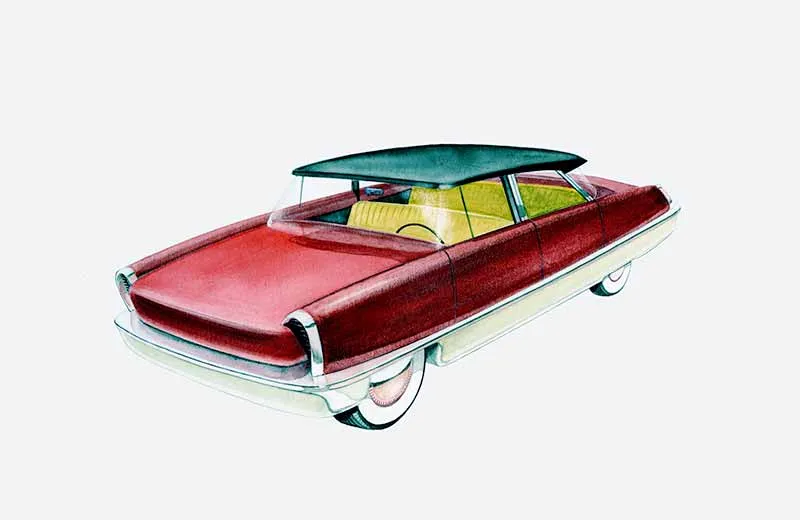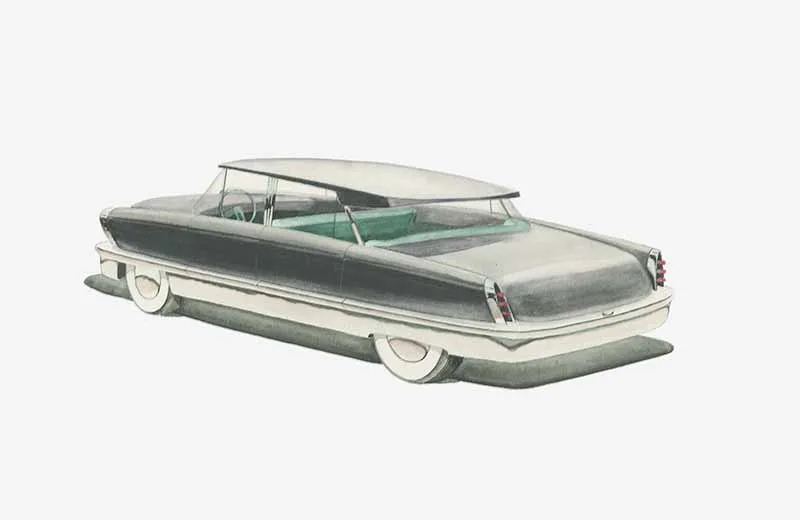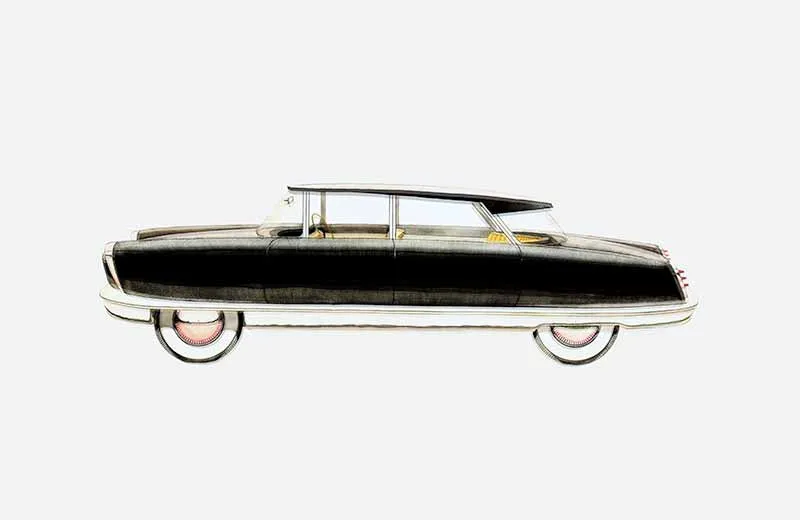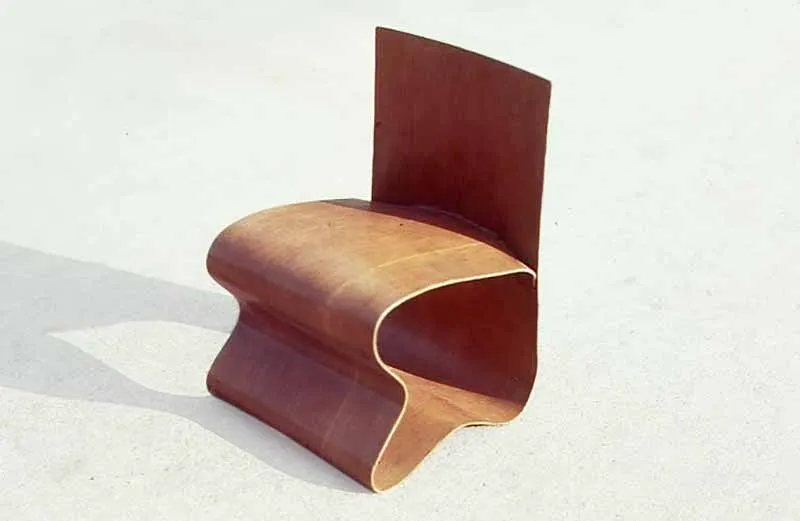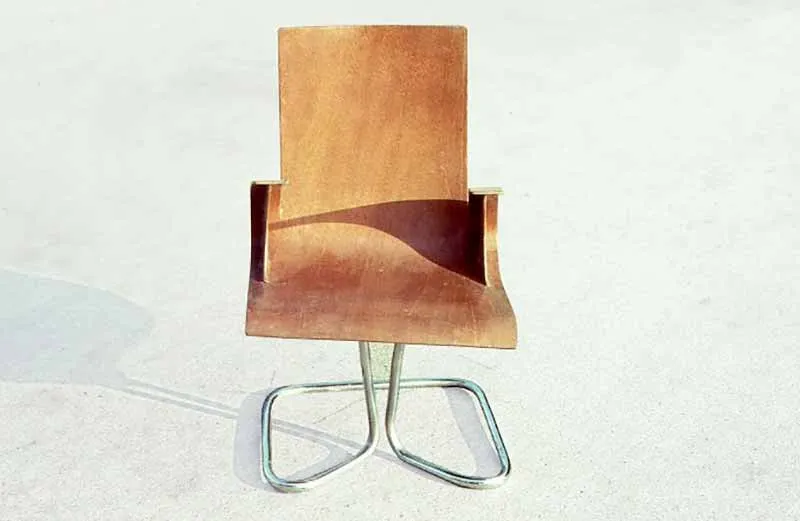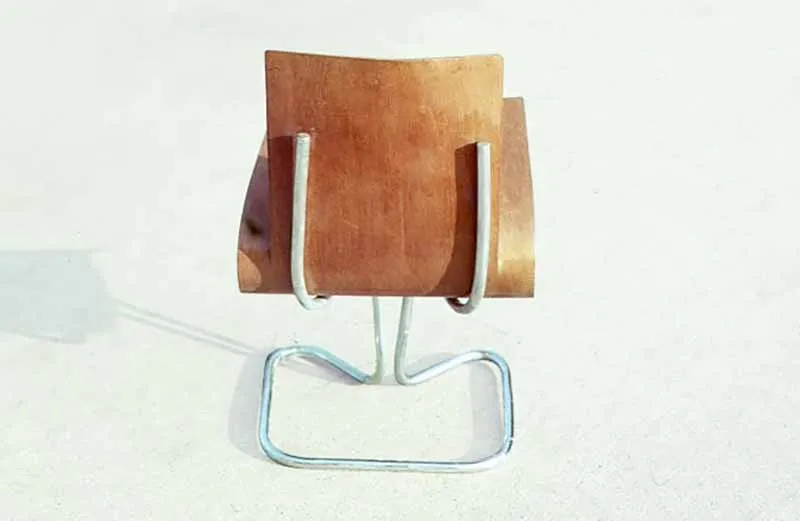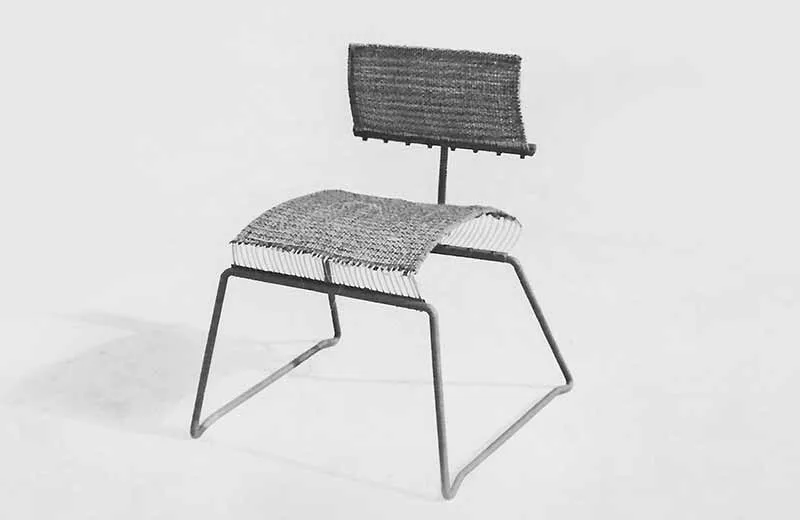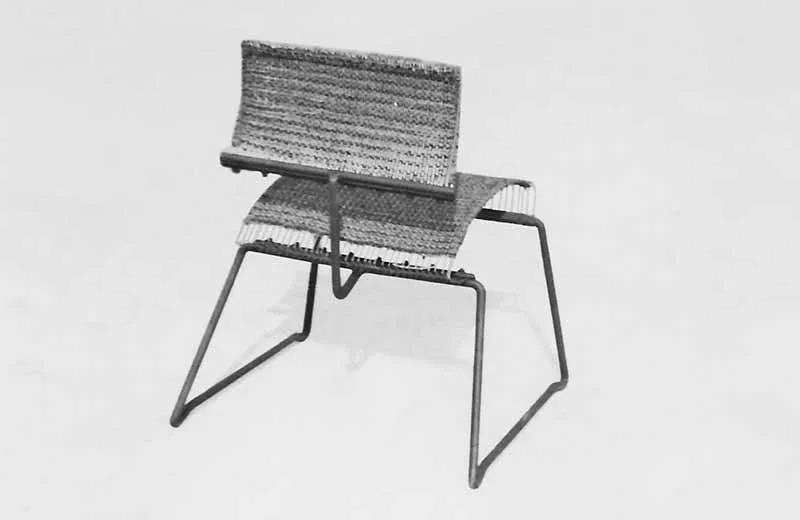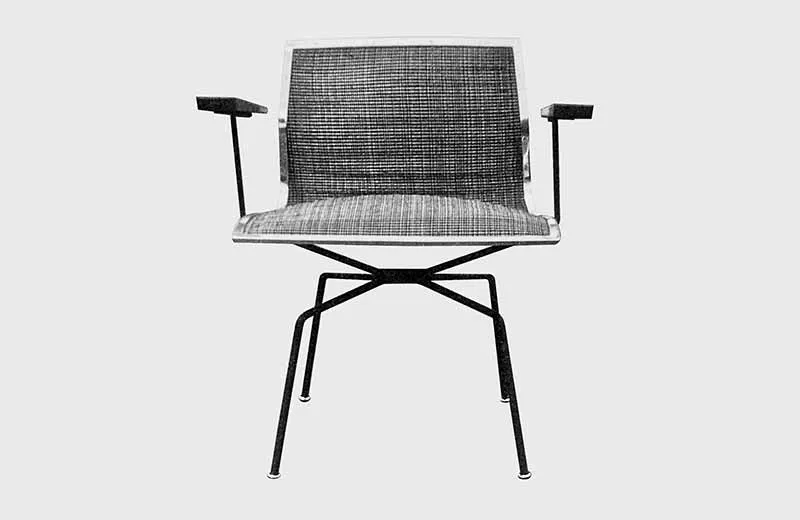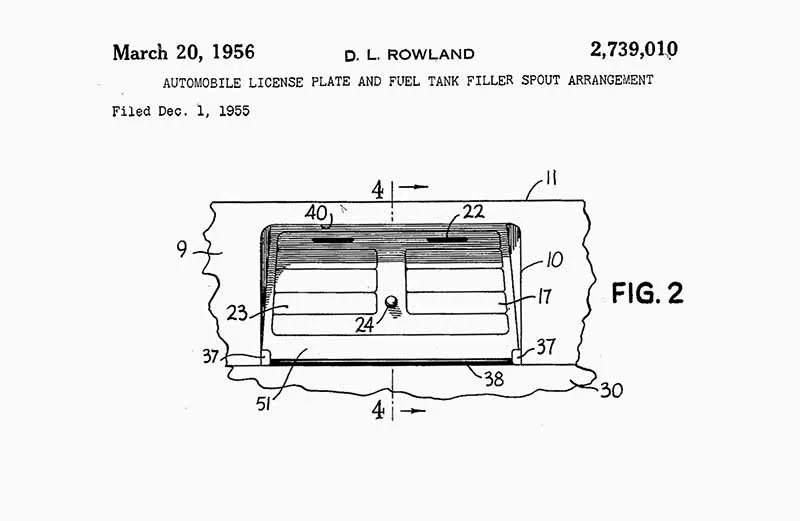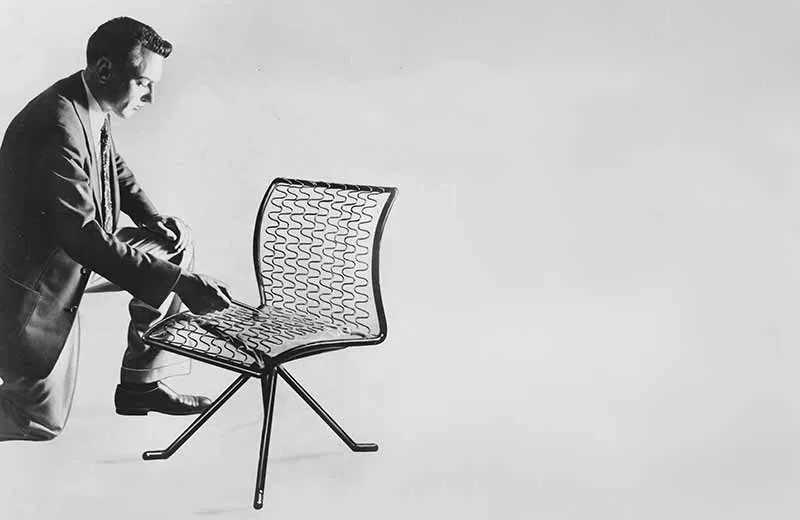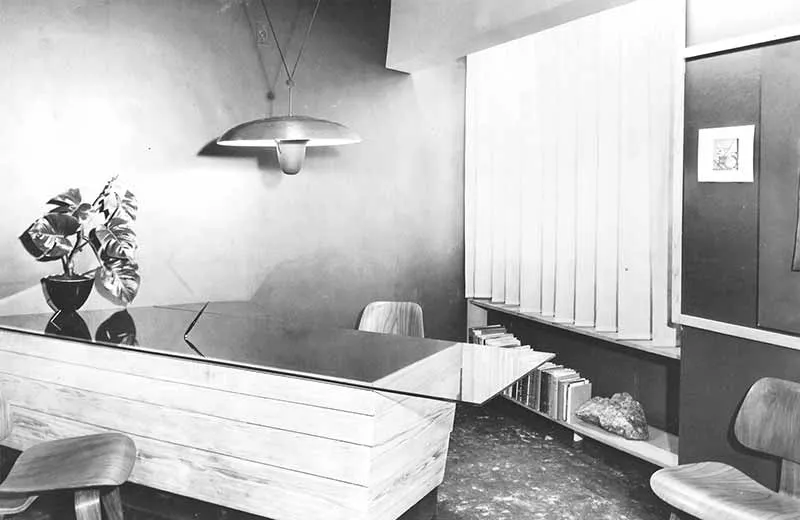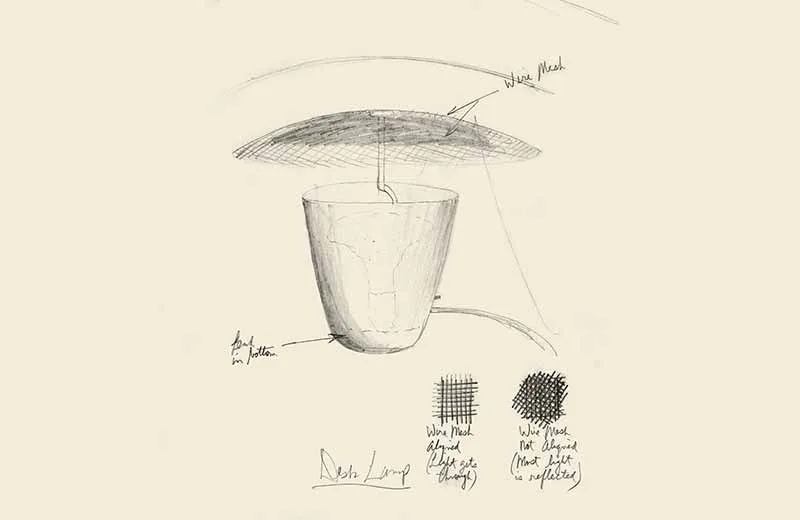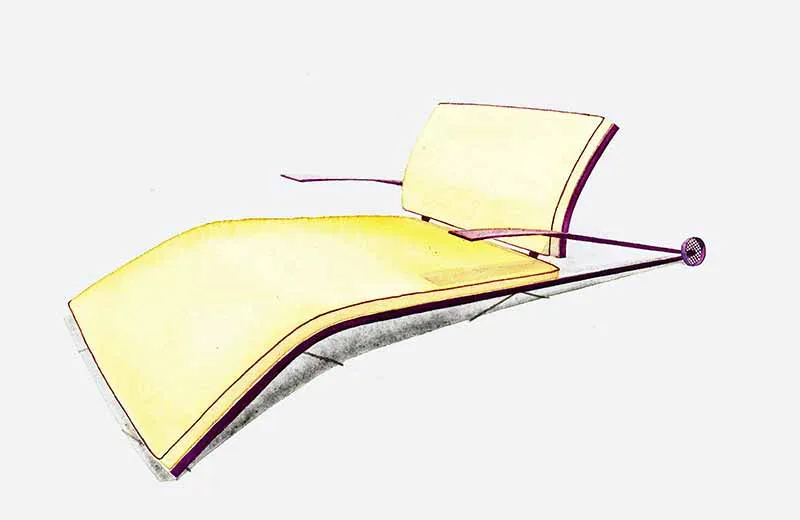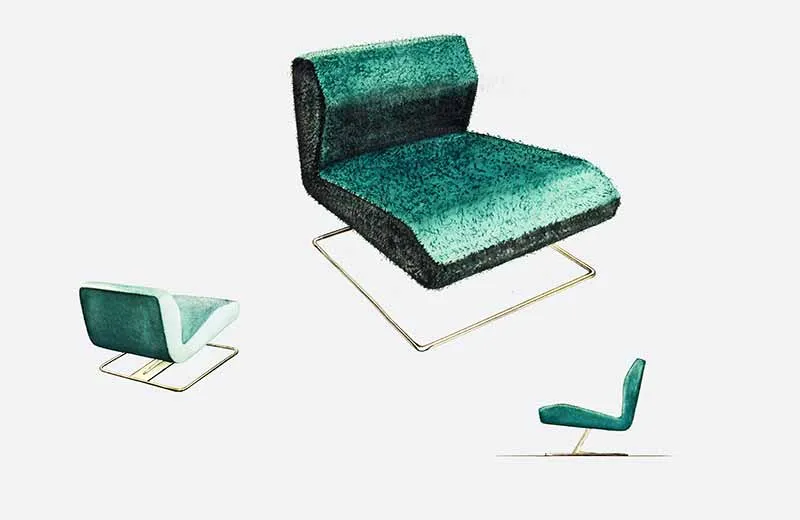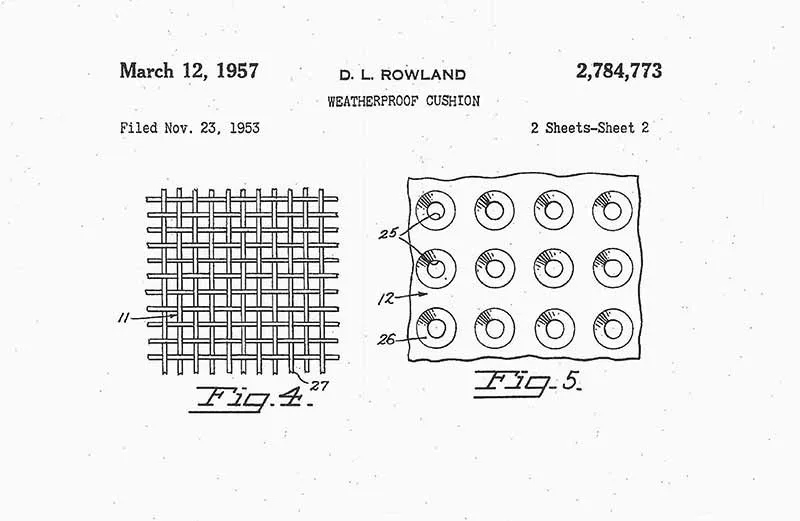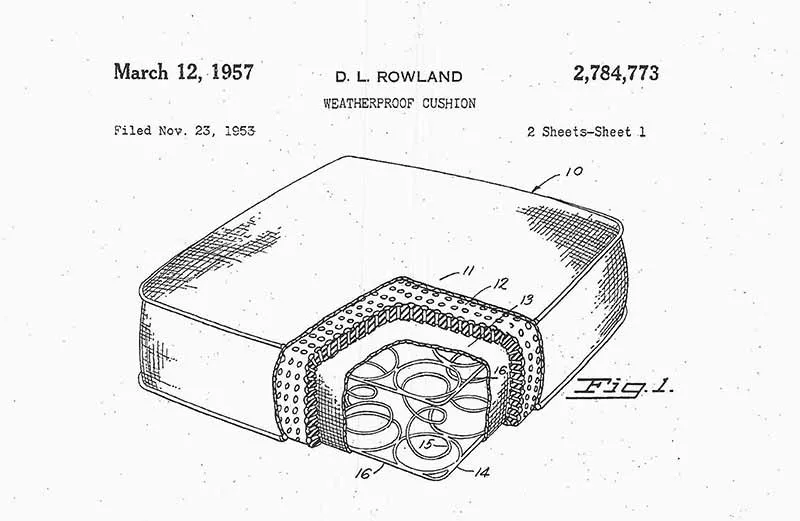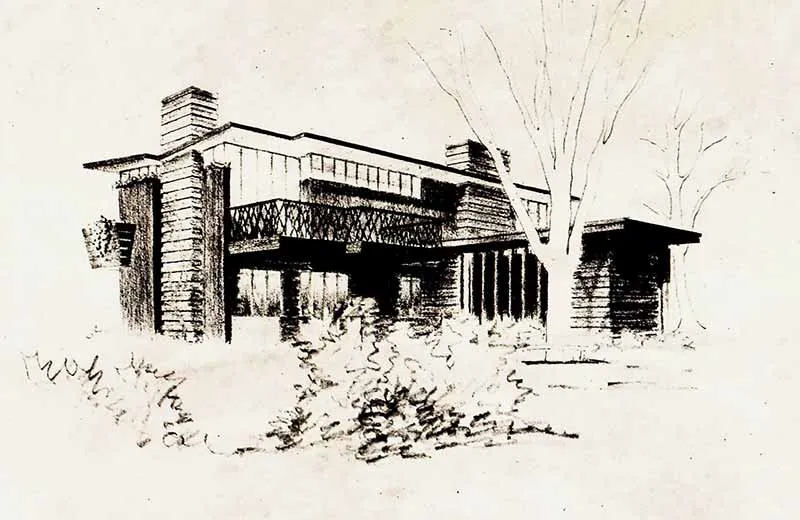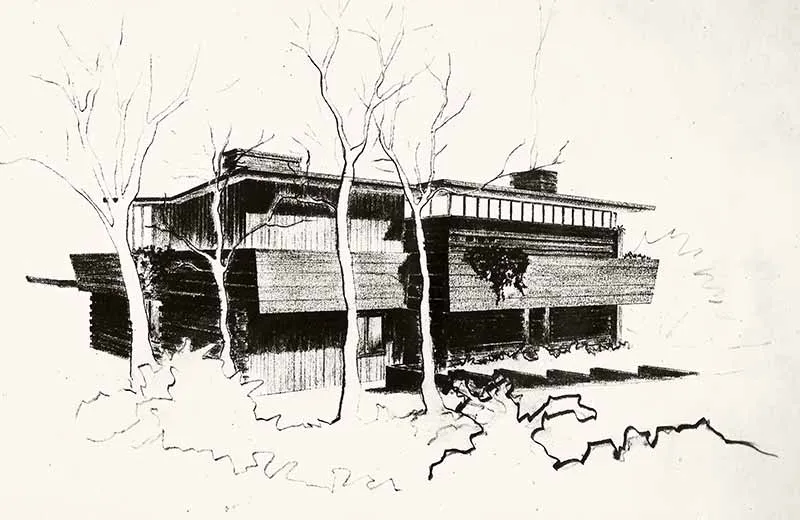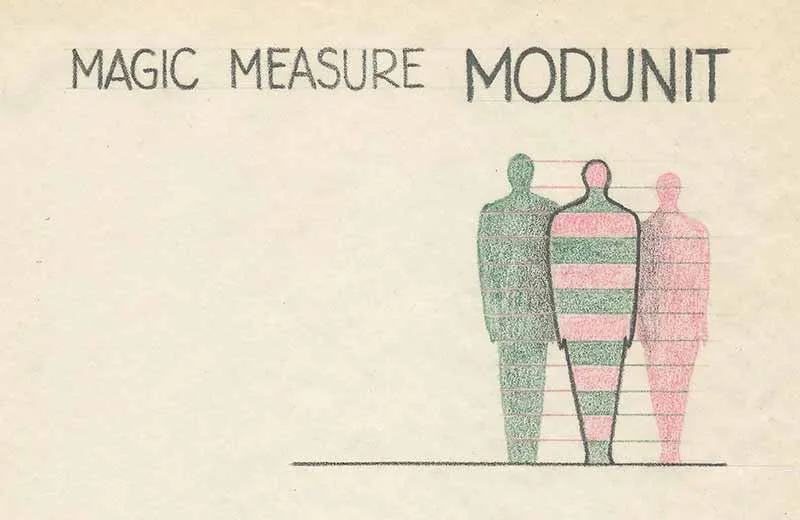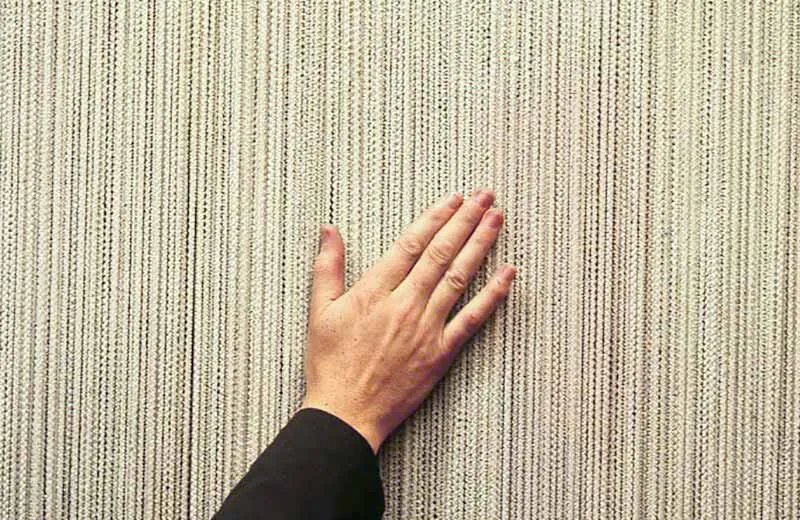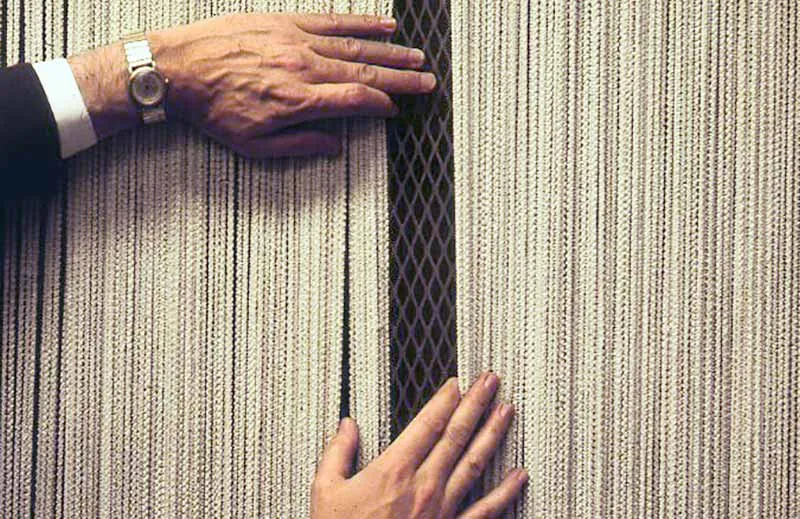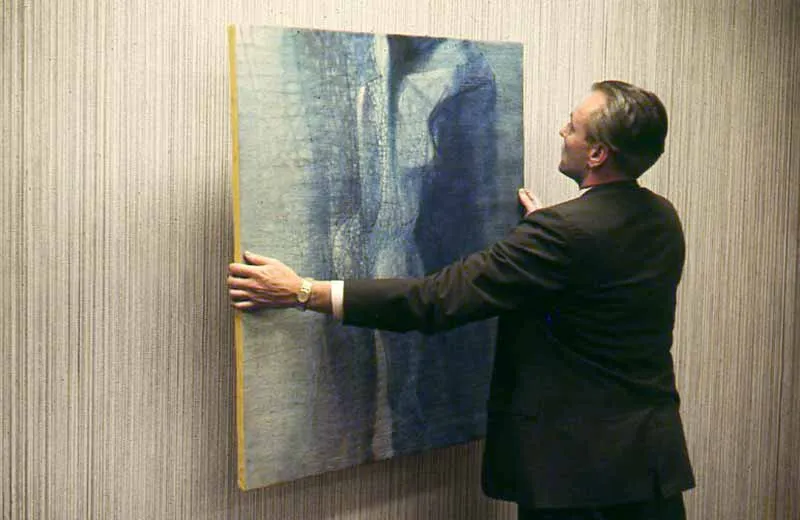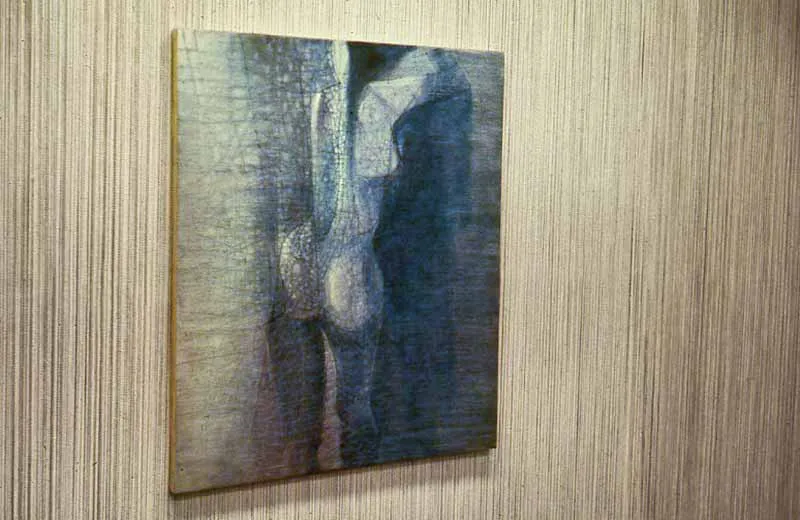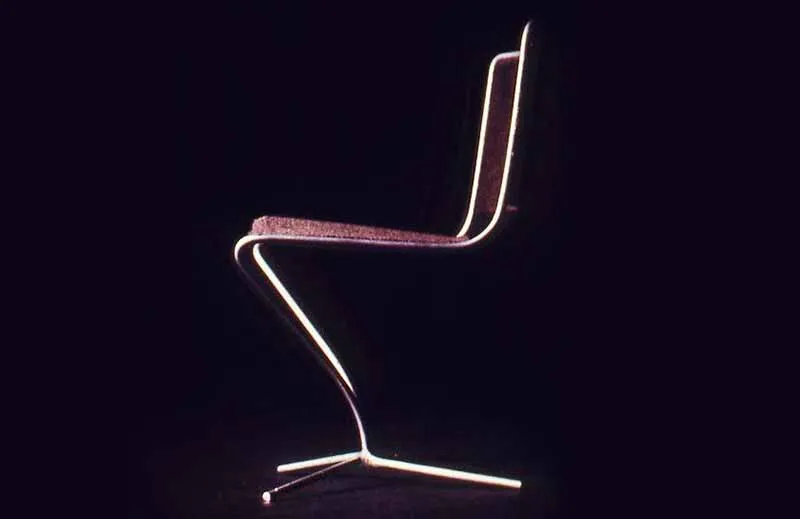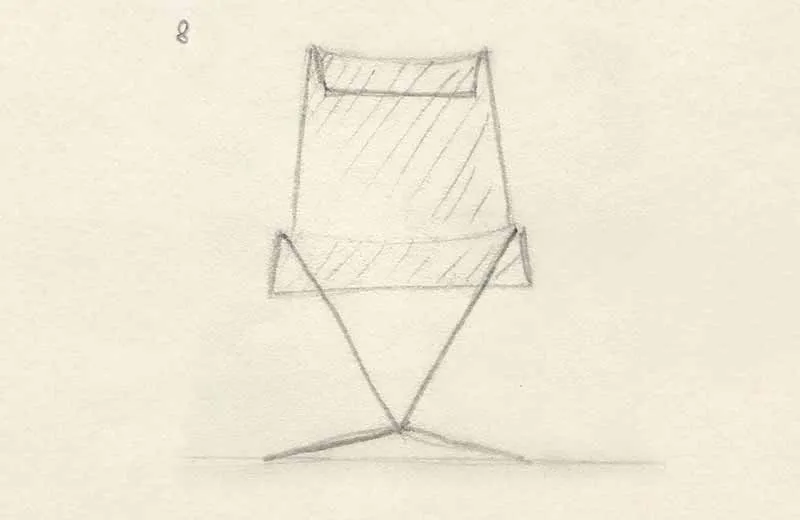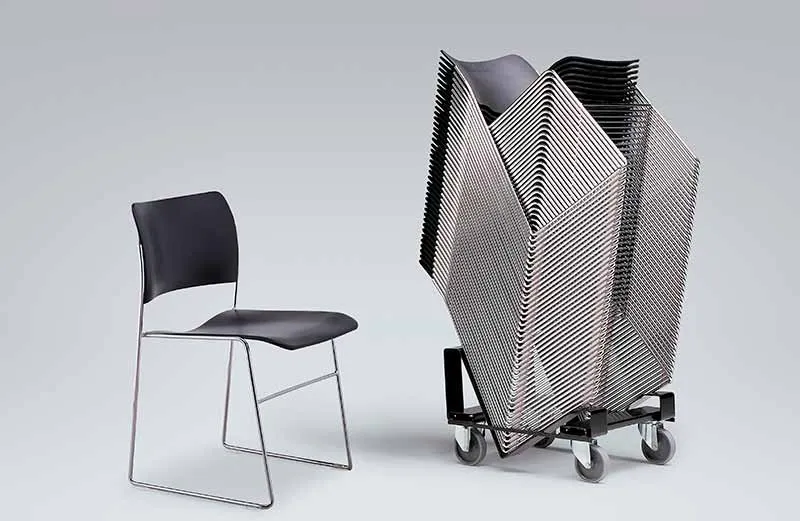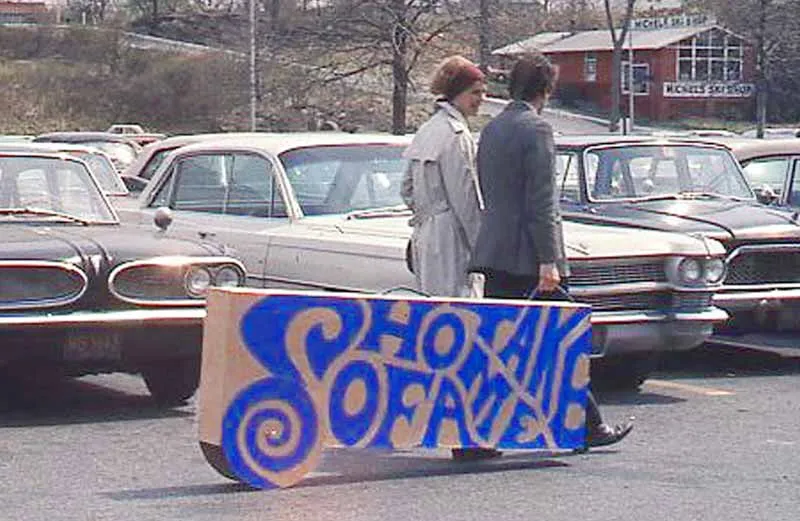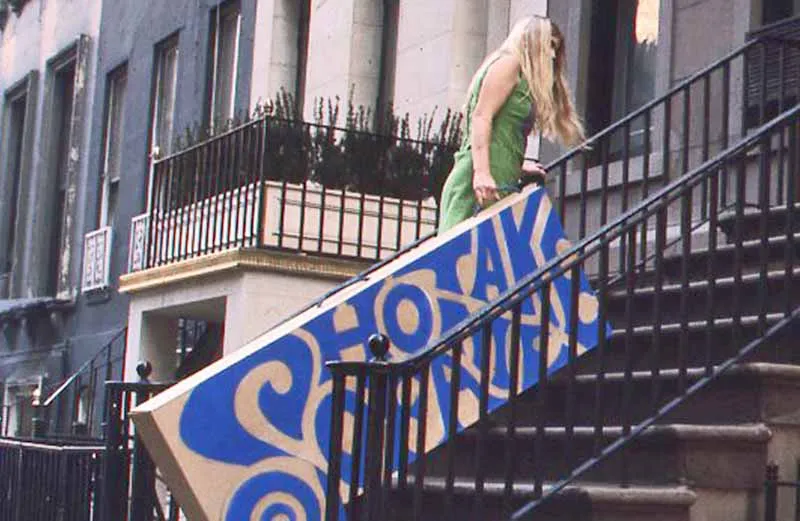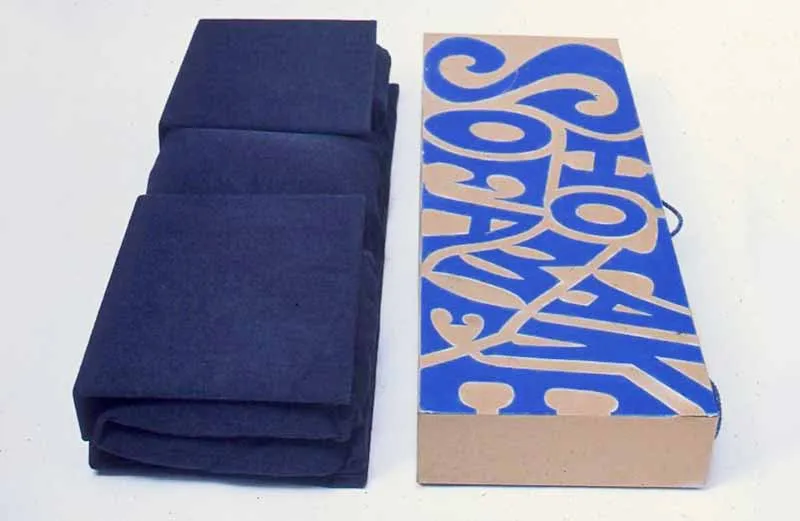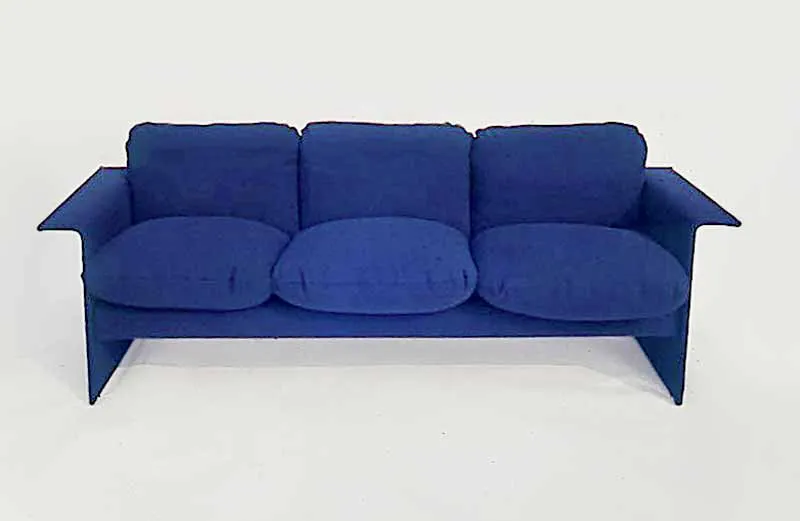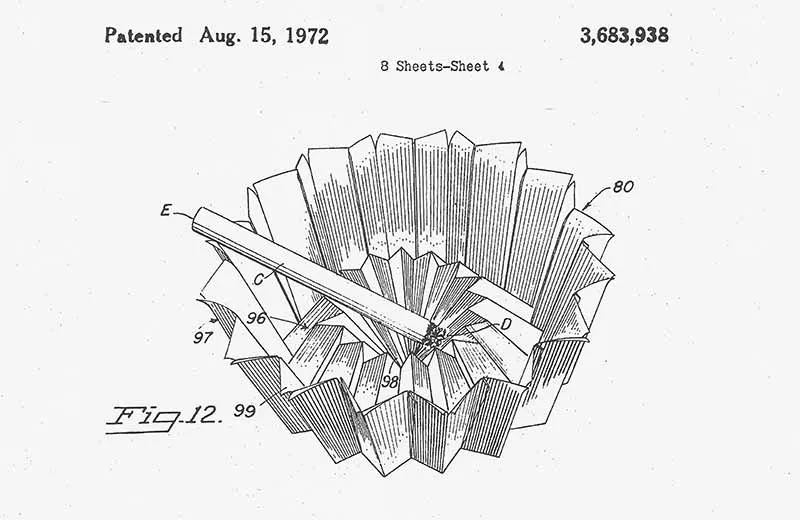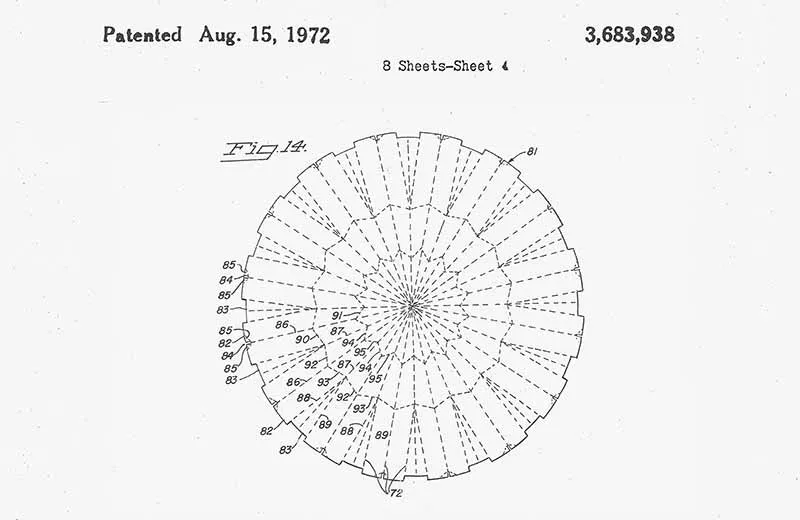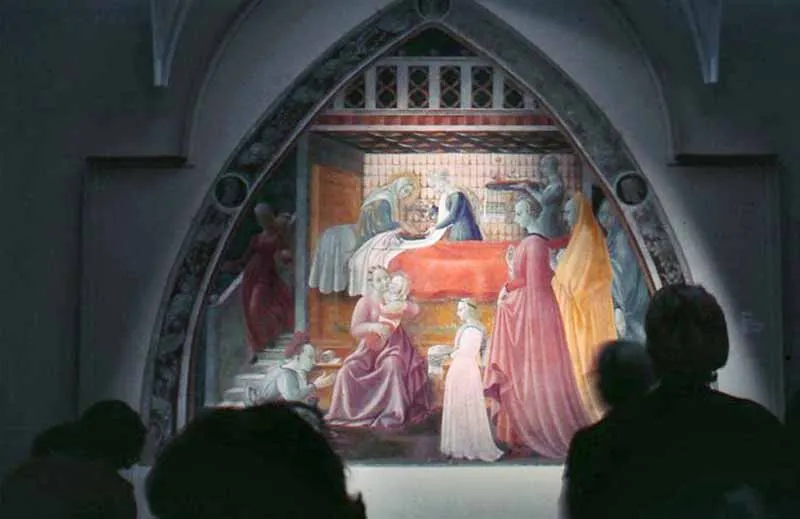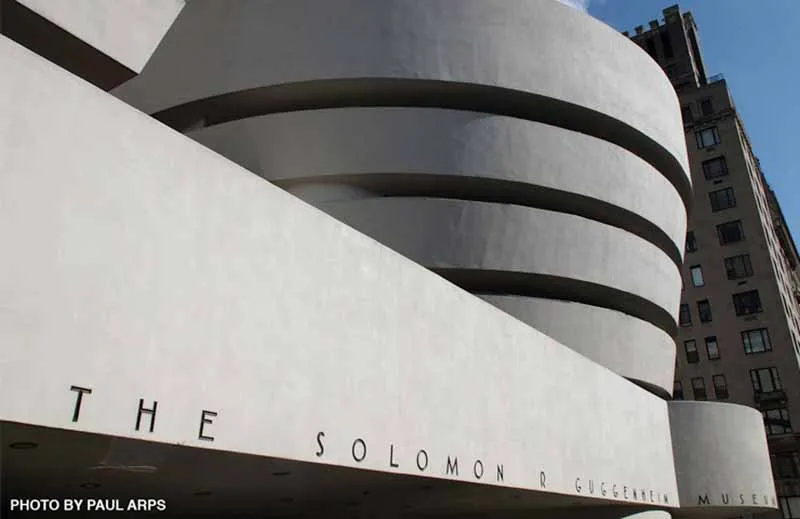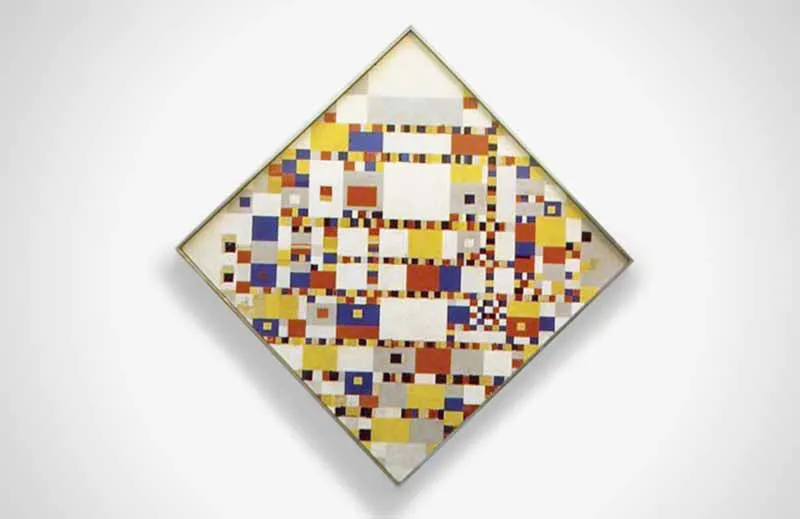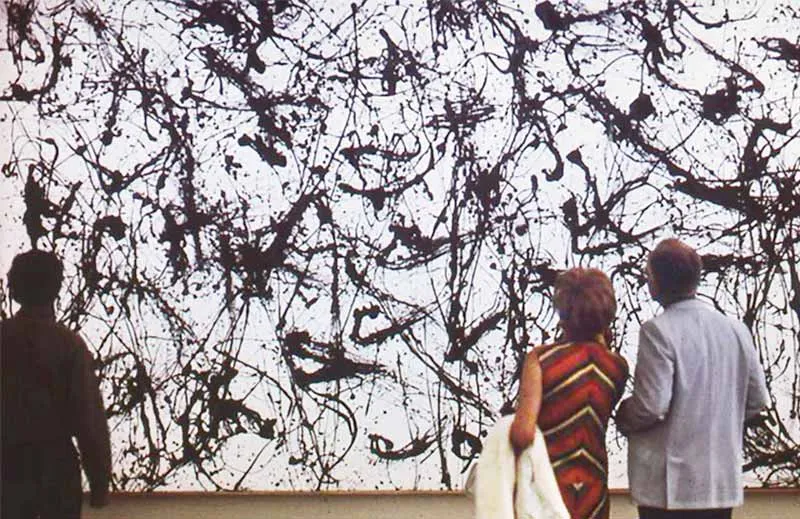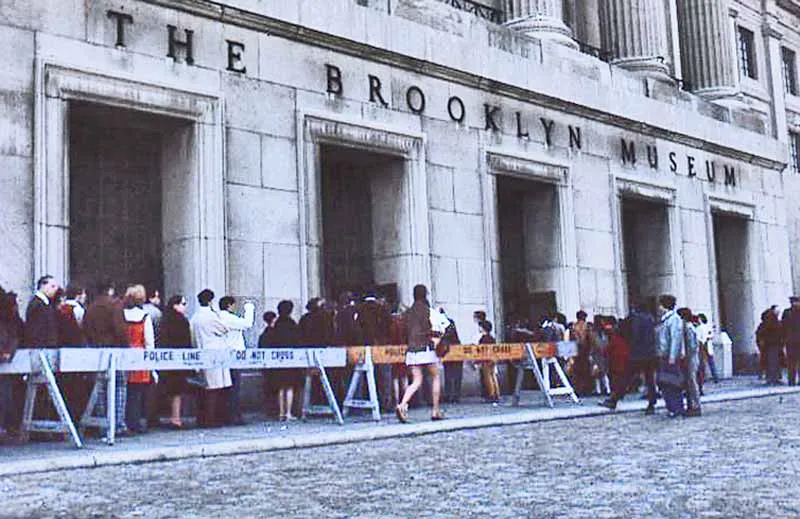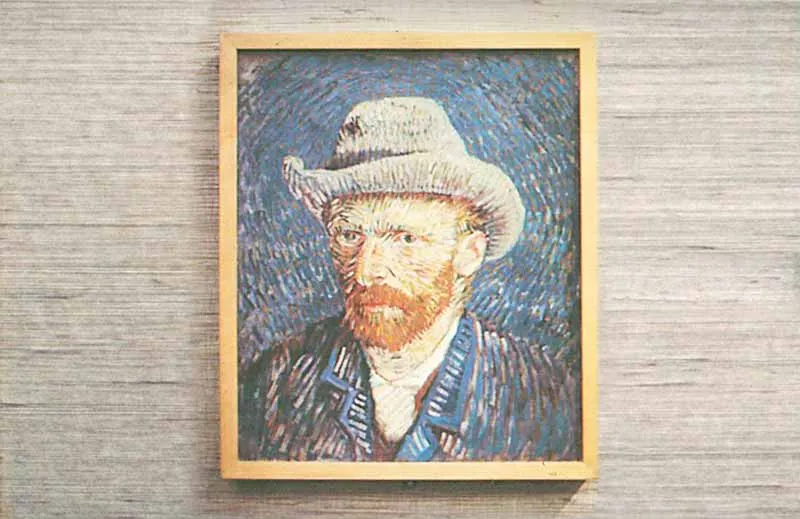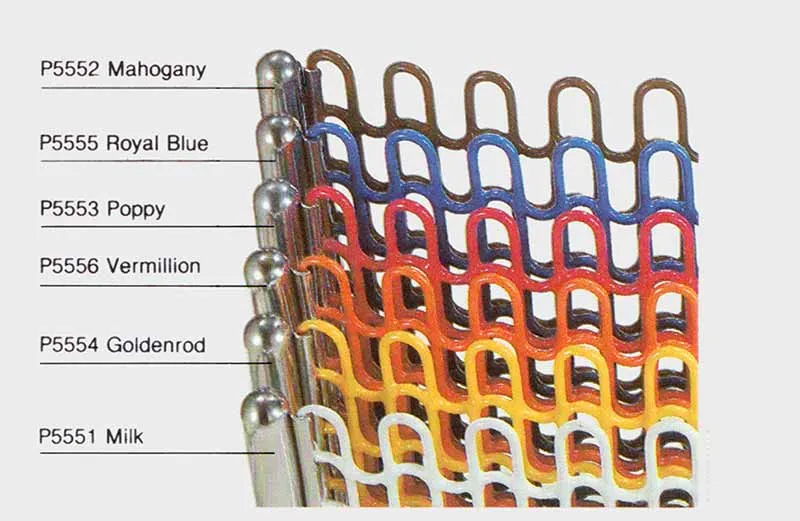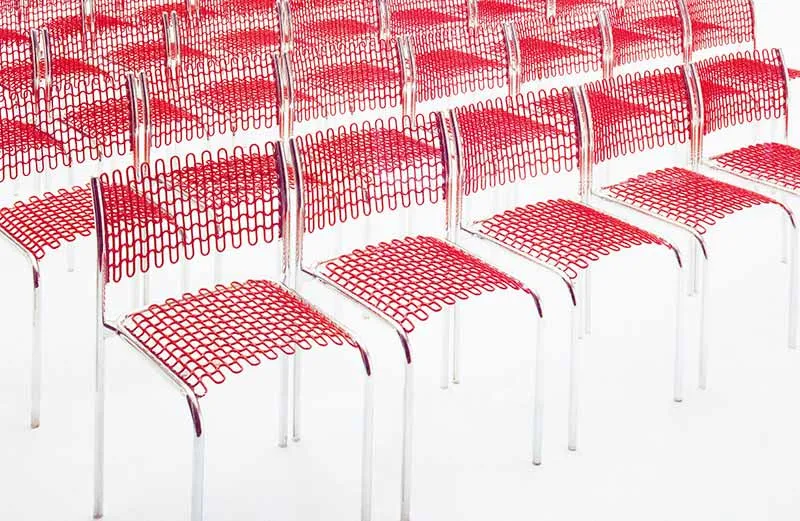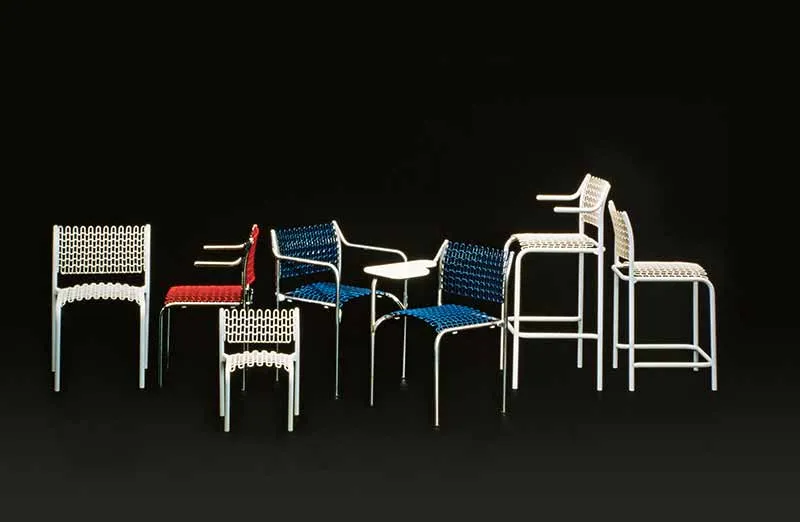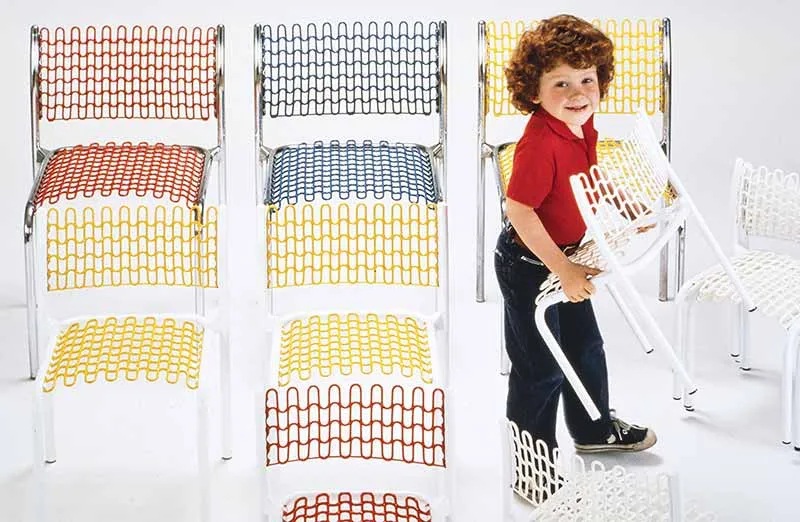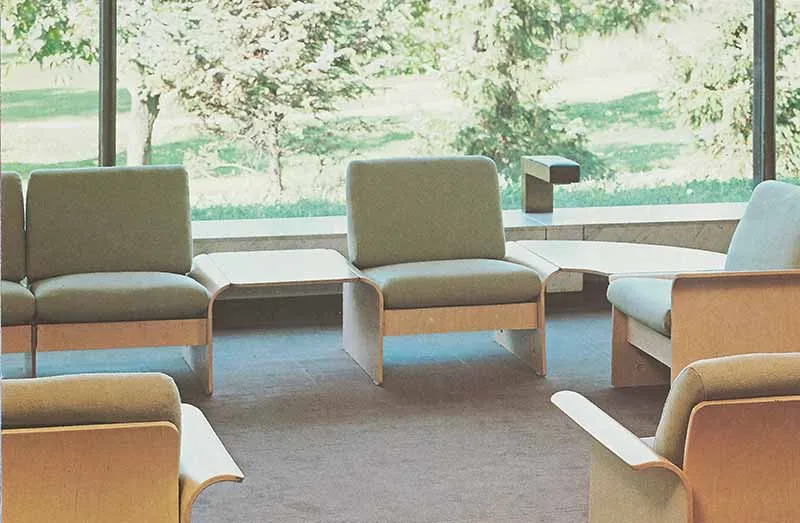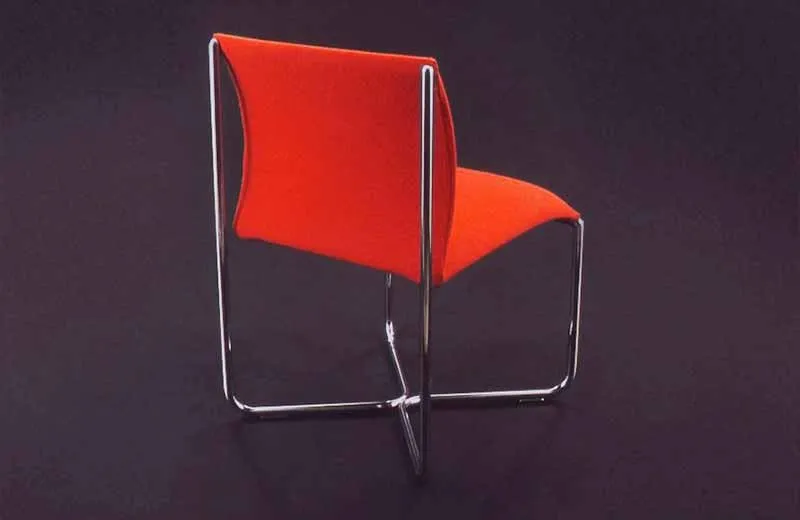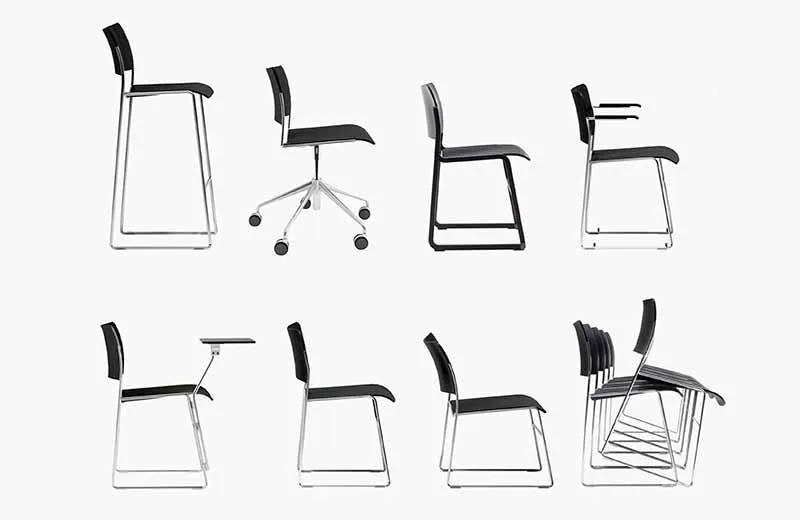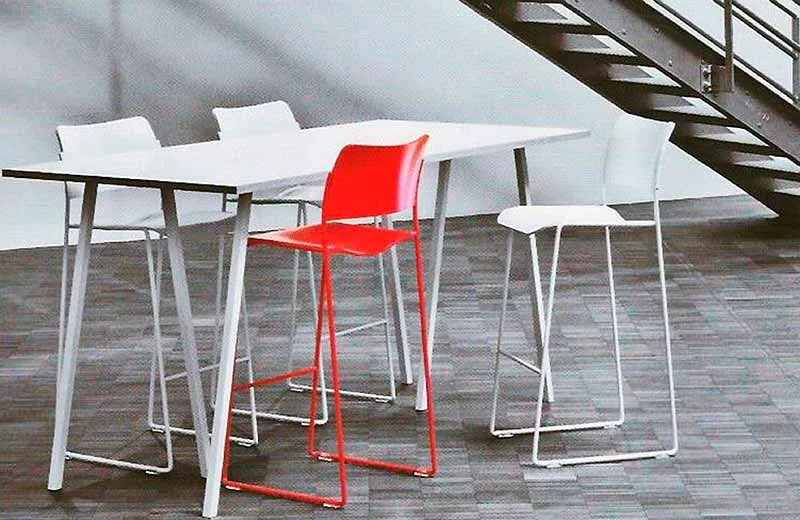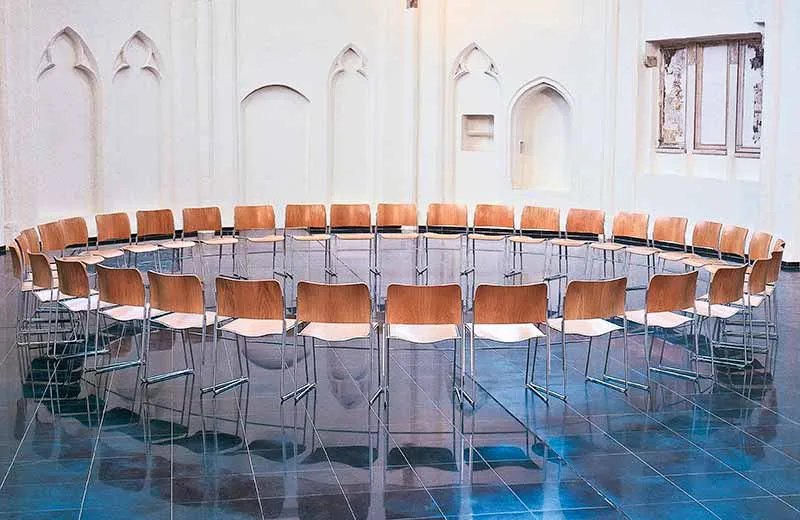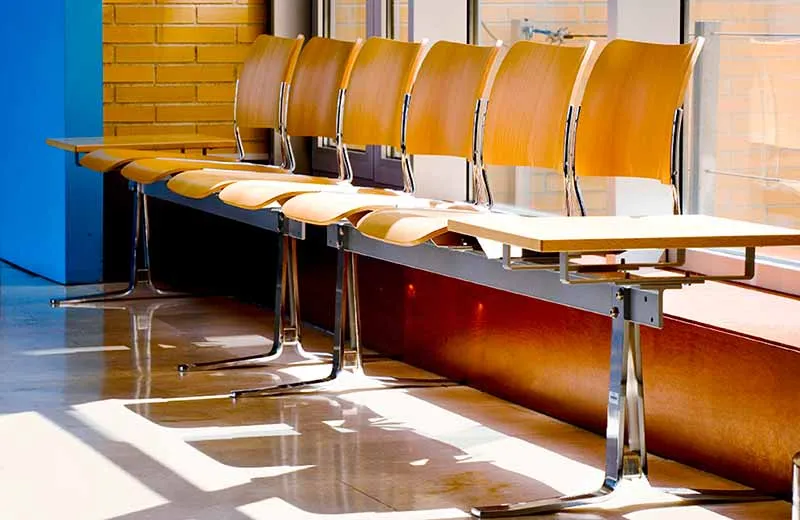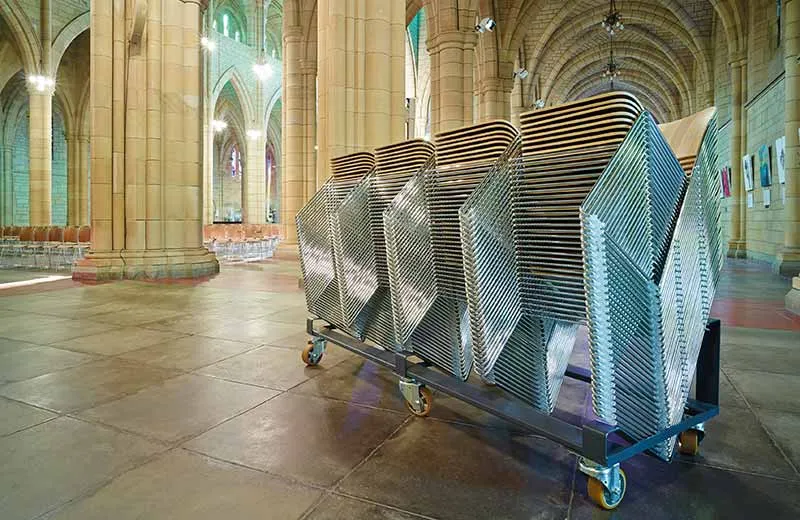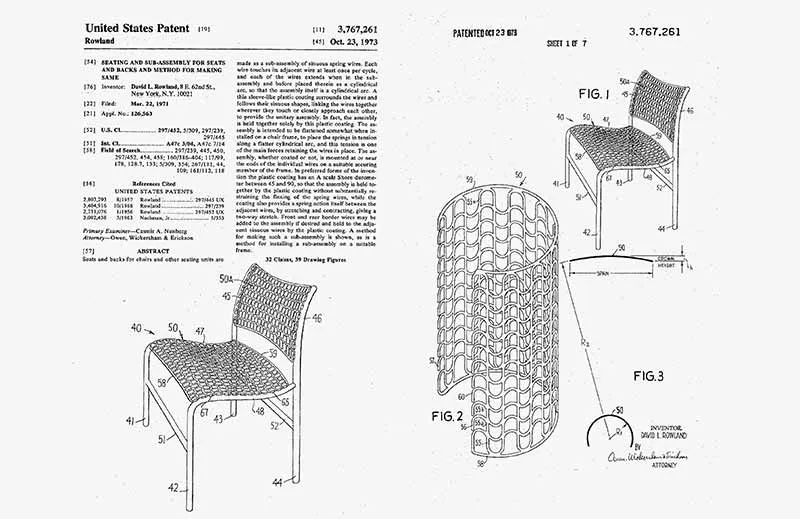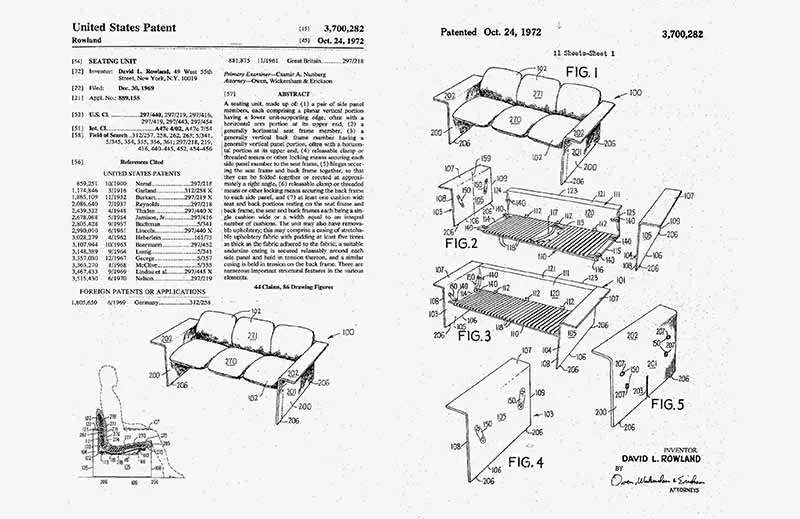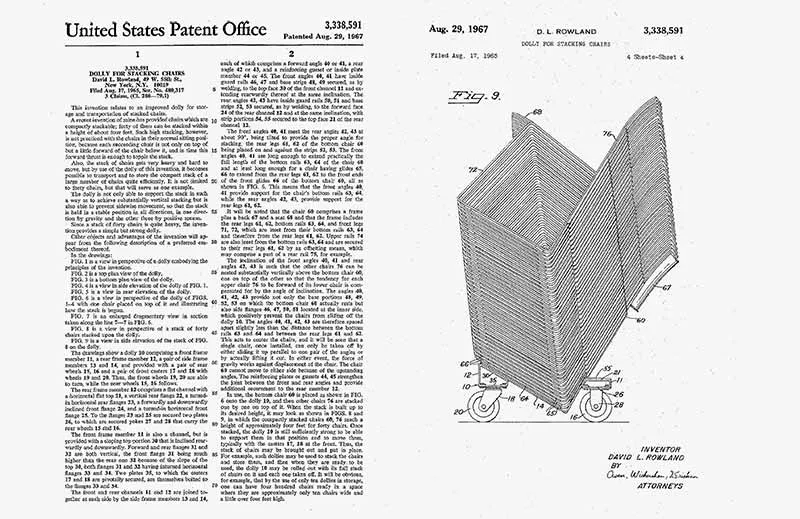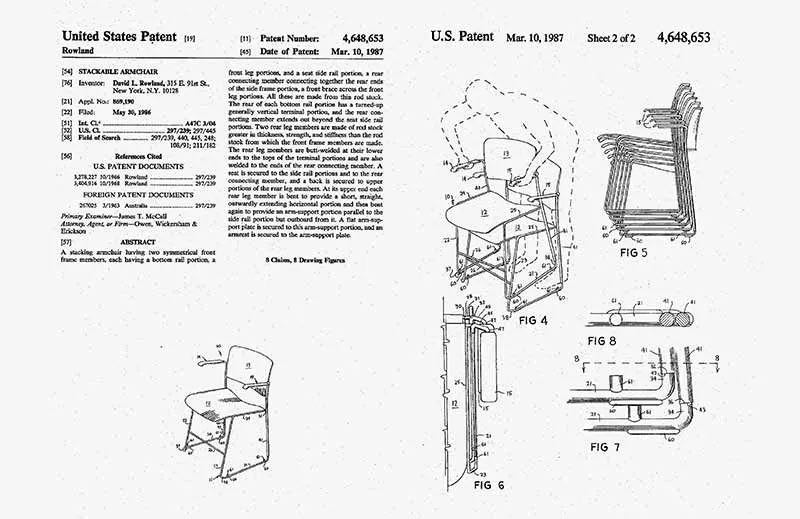David Rowland’s work is that of innovator, problem solver, futurist, minimalist and artist.
It is intelligent, purposeful, refined and enduring.
1949
Automobiles
Rowland’s automobile designs and renderings from his time at the
University of Southern California, foreshadow his propensity for
sleek, uncluttered form, exquisite attention to detail and, of
course, his skill as an artist.
1949
Molded Veneer Chairs
Rowland’s first chair, the Ribbon Chair, is an experimental design
constructed of molded veneer. The second chair, also of molded
veneer, has a tubular steel cantilever frame, which adds
flexibility to the design. Both designs are exceptionally elegant.
1950
Magic Carpet Chair
Designed and created by Rowland during his time at Cranbrook, the
Magic Carpet Chair is “the padded spring chair that isn’t.” It has
the comfort of an upholstered chair, without all the padding. The
seat and back are constructed of flexible steel wires woven with
wool yarn by his classmate, textile designer, Jack Lenor Larsen,
and the design can be easily adapted to seating in cars, buses,
airplanes, and even tanks. The seats and backs are also
bulletproof, a response to Rowland’s fear, as a WWII bomber pilot,
of being hit by bullets from beneath his seat. One of Rowland’s
Cranbrook professors says that this chair is, “better than
Eames!”—the highest praise for the young industrial designer.
1951
Spider Chair
An experimental chair of woven steel wire and yarn, The Spider
Chair is developed and created by Rowland in California and at
Cranbrook, where Jack Lenor Larsen wove the seat in a manner
similar to the Magic Carpet Chair. It also has a unique torsion
bar suspension.
1951
License Plate Gas Cap Cover
Rowland had a summer job pumping gas, and he never knew which side
of the car the gas cap would be on. This gave him the idea of
moving the gas cap to under the rear license plate of the car,
where it would be centrally located and neatly hidden. While at
Cranbrook, he takes his design to the chief stylist of a major
automobile company in the Detroit area in the hopes of securing a
summer job. They tell him they aren’t interested in his feature or
in hiring him. Six months later, his license plate gas cap cover
appears on their cars. Over the years, the feature is incorporated
on over 700 million cars. This is a pivotal moment in Rowland’s
career, as he learns early about the importance of patenting and
protecting his ideas.
1952
Transparent Chair
The No-Sag Spring Company of Detroit gives Rowland his first
commission: an experimental chair that would showcase their
springs. The Transparent Chair is a thin, resilient chair at just
¼-inch thick, and is soft, without being bulky. Rowland wanted the
design to be as pure as possible while highlighting the company’s
sinuous springs. The chair is shown to wide acclaim at the
National Home Furnishing Show in New York’s Grand Central Palace,
and is called, “a chair ahead of its time”.
1951
Lamps
Rowland designs a number of chandeliers and lamps featuring
diffused light. He wins first prize for one of them in a contest
sponsored by the New York Residential Lighting Forum and the
Illuminating Engineers Society. The second photo shown here
includes a glass top desk and office of Rowland’s design.
1952
Outdoor Furniture Suite for Maria Bergson
Rowland’s first job in New York is designing and fabricating an
outdoor furniture suite for Maria Bergson. Bergson, best known for
revolutionizing and modernizing commercial office design,
commissions Rowland to design and build a complete set of terrace
furniture for the executive offices of the Pacific Coast Borax
Company in Beverly Hills, CA.
1953
Lounge Set
In the early 1950s, during the work on the Bergson project,
Rowland continued to experiment with his key elements of
seating—thin cushions, minimal and efficient base structure, and
simple lines that respond to the inclined and draped human form.
1953-1955
Norman Bel Geddes Renderings
Norman Bel Geddes, futurist and “Father of Industrial Design” (a
title shared with Raymond Loewy), seeks out Rowland, an excellent
draftsman, to work freelance on architectural renderings for him.
The three drawings shown here are examples of Rowland’s work for
Bel Geddes: two of the renderings are of the Walless House,
designed with walls that could be opened or closed depending on
the weather. In 1955 Bel Geddes takes his staff, with Rowland as
head draftsman, to Jamaica for the summer. There, Rowland makes
hundreds of renderings, including many for the interiors of
Seagram’s liquor stores.
1953
Drain Dry Cushion
At an outdoor furniture showroom in New York, Rowland introduces
himself to a furniture company president who asks him to create a
special product—a seating cushion that water would easily pass
through. For the next two years, Rowland studies different
materials and waterproofing processes until he devises a
successful design: the Drain Dry Cushion. He patents the product
and licenses it to Lee Woodward & Sons. The royalty income pays
Rowland’s rent for the next 15 years and allows him to open his
own studio.
1954
Cohen House
Rowland’s design for an architectural renovation of a residence in
Riverdale, NY, recalls the work of Frank Lloyd Wright, an early
childhood influence.
1955
Residential and Commercial Interiors
Rowland’s interior designs include an apartment on Sutton Place
and an office at 666 5th Avenue in New York. In keeping with his
commitment to making the greatest impact with the least amount of
material, he sometimes used diaphanous screens or beaded dividers
to separate space (as in these examples), as well as the simplest
contemporary furniture.
1955
MOD, Maximum Order Dimensioning System
After extensive research on the measurements of human anatomy,
Rowland invents his Maximum Order Dimensioning System, or the MOD.
When one MOD, which is 5 5/8” long, is multiplied by small whole
numbers, the result is a series of optimal product dimensions for
people—such as the ideal height for seats, desks, doors, beds,
etc. Rowland’s dimensioning system is intended to help create
furniture that is the most comfortable for the greatest number of
people. His 40/4 Chair is based on the MOD.
1956
Museum Wall System
Rowland creates this singular wall system for hanging works of art
in museums and galleries. The ingenious design consists of a metal
mesh underside covered with panels of yarn, which eliminates the
need for the museum or gallery walls to be repainted when an
exhibition changes. It is an example of Rowland’s forward-thinking
approach in which he designs a simple, straightforward product to
replace the conventional—burdensome and inefficient—way things had
been done.
1957
Mesh Chair
This experimental chair is another example of Rowland’s
exploration of minimalist design. The seat and back are made of
either knitted steel or plastic mesh stretched across a tubular
steel frame.
1957
Zig Zag Cantilever Chair
The Zig Zag Cantilever Chair further develops the principles
Rowland worked out in his earlier Transparent Chair. Its unique
patented mechanical and design features include a weatherproof and
squeak-proof method of attaching springs to frame, where the
springs are simply snapped over the tubular frame and the assembly
dip-coated in vinyl plastic. The chair is included in the
prestigious 11th Triennale exhibition in Milan, Italy in 1957. It
also wins first prize in a contest sponsored by the National
Cotton Batting Institute.
1964
40/4 Chair
Rowland’s 40/4 Chair is one of the most revolutionary furniture
designs of the 20th century. 40 chairs can be stacked in a height
of 4 feet. The chair is made of 7/16” diameter steel rods, with a
contoured seat and back of plastic resin, molded veneer, metal or
upholstery. A whole meeting room or lecture hall can be set up or
cleared in minutes, with minimal time and effort. In addition to
its unsurpassed stacking and handling qualities, the 40/4 is
equally renowned for its comfort, durability, and timeless beauty.
It wins the coveted Grand Prix at the 13th Triennale exhibition in
Milan, Italy, as well as numerous other awards. It is in permanent
collections of museums all over the world.
Visit our 40/4 page for more.
1966
Take Home Sofa
This completely collapsible sofa is designed to fit into a slim
box that the customer can easily take from store to home, with no
need to wait for delivery or special order. It has a removable,
snug, stretch slipcover that could be purchased in different
colors—no upholstery needed. It is another example of Rowland’s
desire for compactness, simplicity, practicality, and efficiency
in his design work. The Take Home Sofa is the forerunner of his
Modulus Seating System, introduced twenty years later.
1967
Disposable Safety Ashtray
Rowland did not smoke himself, but observed the need for a safer
ashtray. In order to prevent cigarettes from causing burns and
fires, he invents an ashtray where cigarettes would always fall
into the tray. This patented design is composed of two concentric
and stackable cup-shaped receptacles, configured in such a way to
prevent cigarettes from falling out, and is made of a disposable,
fireproof material. The topmost ashtray could be easily lifted
off, leaving a clean one underneath.
1968
The Earl Rowland Foundation
David Rowland establishes this non-profit foundation in honor of
his father, Earl Rowland, who had been a California Plein Aire
artist, and the director of the Pioneer Galleries and Haggin
Museum in Stockton, CA from 1937 to 1964. The principle purpose of
the foundation was to develop a library of narrated filmstrip
documentaries recording significant museum exhibitions, which were
then circulated to smaller museums and educational institutions
across the country and abroad.
1973
Soflex
Soflex is a material invented by Rowland in which sinuous metal
springs are dipped in vinyl plastisol. When cured, the plastisol
hardens and holds the springs together, forming a thin, open-mesh,
resilient seating material. Previously, if designers wanted a thin
seating material, they had to rely on something hard, like plastic
or molded plywood. Conversely, if they wanted something soft, it
had to be thick and unwieldy, such as foam cushioning. Soflex
solved this predicament by yielding an extremely thin material
that was also soft and flexible, affording a comfortable seat. It
is made in individual units to be applied to unique seat frames.
1979
Softec Chair
The Softec Chair incorporates Soflex, Rowland’s resilient seating
material described above. The chair stacks compactly and is
produced in numerous variations. In addition to the side chair,
there are arm chairs, bar chairs, outdoor chairs, chairs with
tablets, and children’s chairs. The design wins two Institute of
Business Designers (I.B.D.) Gold Medals.
1982
Modulus Seating System
The Modulus Seating System grows out of Rowland’s Take Home Sofa
design of 1966 and is manufactured by Martela of Finland. This
versatile, adaptable system includes chairs, settees, sofas, end
tables and connecting pieces, to accommodate a large range of
seating configurations. It is appropriate for educational,
hospitality, business, and residential seating, and it ships flat.
1984
Billow Chair
The Billow Chair, like the Softec Chair, incorporates Rowland’s
resilient seating material Soflex, which allows the chair to have
a flexible seat and back with a light, thin profile. On the Billow
Chair the seat and back seem to “float.” The lumbar curve of the
chair back and sloped edge of its seat work together to create a
snug, yet relaxed and comfortable body. The chair is a minimalist
icon of passive ergonomics: an elegant example of a chair that
“passively”, or automatically, adjusts based on the natural
movements of the occupant. It is manufactured by Nienkamper of
Canada. The chair wins a Resources Council Product Design Award in
1989.
2004
40/4 Family of Chairs
Rowland expands the design of the 40/4 Chair for HOWE to include
the side chair, arm chair, swivel chair, barstool, lounge chair,
and all wood chair, further adding to its versatility. This range
and ease of application of the 40/4 concept is further testament
to the enduring utility of the design.
Visit our 40/4 page for more.
1956-2010
Patents
Rowland gave great thought and care in protecting his ideas and
inventions with patents. Over his career he was awarded 45 U.S.
and foreign patents.
